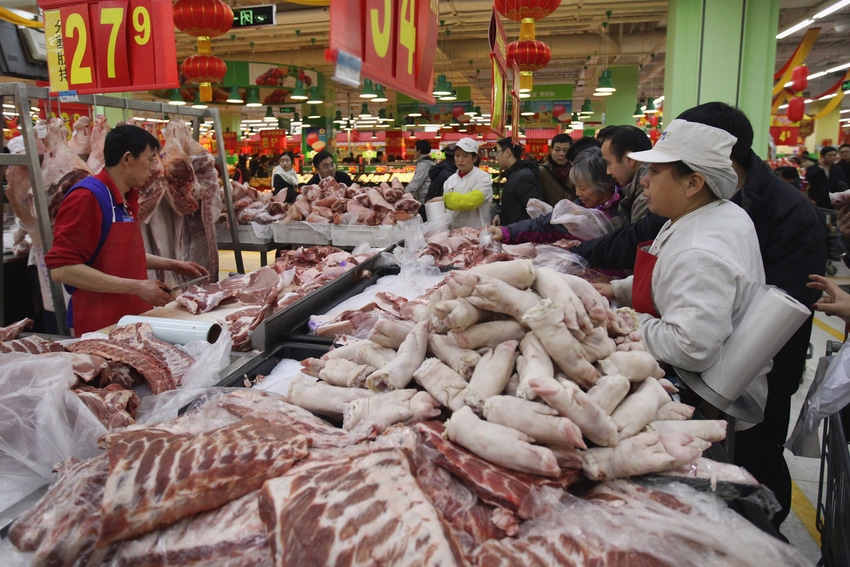3 things happening now in China that pig farmers shouldn’t ignore
China is bouncing back from the large cull of sows, pork imports soften.
June 20, 2017

China, the world’s most populated country, is the midst of turning point. The government’s priority to highly encourage more Chinese to exchange the rural lifestyle for urban dwellings is resulting in a shift in consumer’s preferences and fewer pig farmers. Although the changing China is not fresh news, the current trends in the country known for producing and eating the most pork are something to watch.
Here are three trends happening in China right now that no pig farmer should ignore.
1. Pork demand hits the ceiling, sales of vegetables climb — According to Euromonitor, last year China’s pork sales hit three-year lows of 40.85 million tonnes down from 42.49 million tonnes in 2014. At the same period of time, sales of vegetables climbed. Research from Nielsen, sales of vegetable-only dumplings grew 30% last year.
An increase in disposable income fuels consumer’s selection. Chinese are seeking healthy food options. A consumer survey conducted by Nielsen shows 80% of Chinese will pay more for unwanted ingredients in their food items, much higher than the global average of 68%.
2. Pork expansion — The shift away from backyard pig farmers to larger operations is resulting in fewer hog farms to a more modern pork production system. Reuters reports that Chinese hog farmers are on a building spree. The reports from local media that shipments of live hogs from the United States arriving in the country’s hog region, diversifying the genetic portfolio of China’s swine herd, is another clear sign of expansion.
Yet, Rabobank Food & Agribusiness team expects the closure of hog farms will offset the expansion of new farms in the first half of 2017. As a result, Rabobank estimates Chinese pork product will increase 1-2% this year. Also, the environmental policies will continue to play a key role in reshaping the geographic distribution of pork production.
3. U.S. pork exports soften — As China’s domestic pork production rebounds, U.S. pork muscle cut exports to China/Hong Kong have trended below year-ago levels each month in 2017. Exports of pork variety meat, however, have continued to outpace year-ago levels and helped offset much of the decline in muscle cut exports. For combined pork and pork variety meat exports, April volume was down 7% to 48,457 metric tons, but value was steady with last year at $96.7 million, reports the U.S. Meat Export Federation.
Overall, China is bouncing back from the large cull of sows from 2013 to 2015. Chinese pig farmers contribute the fallen pork sales to the lack of pork available from the country’s shrinking herd size, pushing hog prices higher.
Last year, the USDA’s Foreign Agriculture Service reported China achieved the position of the world’s leading pork importer. As Chinese pork production ramps-up due to higher hog prices and because of government programs to reduce corn costs to livestock producers, the FAS forecasts pork shipments from the European Union and the United States will slip this year.
You May Also Like



